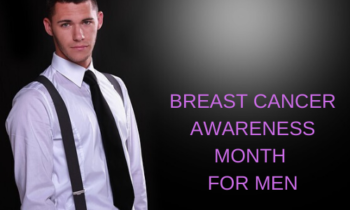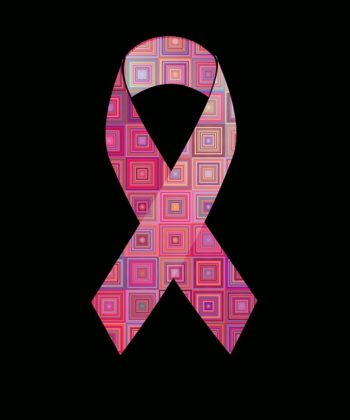 BREAST CANCER – THE EQUAL OPPORTUNITY DISEASE
BREAST CANCER – THE EQUAL OPPORTUNITY DISEASE
Breast Cancer? It’s not just for women anymore. Indeed, it never has been! For men, as well as women, can develop this disease. But because it’s far less common in men, it’s often overlooked as being an important topic of conversation when discussing male healthcare issues. So, in honor of BREAST CANCER AWARENESS MONTH, let’s shine a bright light on this subject as we devote this particular piece to the men in our lives — and to their good health!
To begin, breast cancer is a rare condition in men. In the United States, for example, approximately fifteen hundred men are diagnosed with the disease each year. By comparison, the number of women diagnosed with the disease each year in the United States is about one hundred times greater — or close to 150,000 cases annually. So, why the discrepancy? WHY is there such a difference in the rates of this disease among men and women?
To understand this, we need to understand the structure and development of the human breast. Fetal growth is fairly identical for both sexes throughout the first trimester of a woman’s pregnancy. Both females and males are born with nipples because this tissue develops during the first trimester. At the end of the first trimester, however, it’s believed the sex of the fetus is determined and that the fetus at this point will continue to develop as either a female or a male with the accompanying physical characteristics.
Now, after birth, the female and male breasts remain basically the same until the age of puberty. At this time, human hormones kick in — estrogen in the female and testosterone in the male. Estrogen increases the growth of structures known as ducts and milk glands in the female. It also increases the growth of fat and connective tissue in the female. Testosterone suppresses the growth of these structures in the male. Accordingly, the male breast is composed primarily of undeveloped ducts with a small amount of fat and connective tissue. Yet, all men possess a small amount of nonfunctioning breast tissue, which means tissue that cannot produce milk. This tissue is concentrated directly behind the male nipple on the chest wall. And, it is this tissue — in both females and males — that is susceptible to the uncontrolled growth of abnormal cells associated with breast cancer.
Okay, so what appears to “cause” this uncontrolled cellular growth in men? Well, not surprisingly, many of the risk factors associated with female breast cancer are associated with male breast cancer as well. For one, radiation exposure. Men who have undergone radiation therapy for a condition affecting the chest area — such as a malignancy resulting from Hodgkin’s lymphoma or a tumor of the lung — have an increased risk for developing breast cancer.
Another factor is an increase of estrogen. More estrogen in males results in breast enlargement — a condition known as gynecomastia. Breast enlargement results in a higher risk for developing breast cancer. There are three primary conditions that are associated with an increase in estrogen and breast enlargement in men. They are:
- Klinefelter’s syndrome
- cirrhosis of the liver
- obesity
One at a time, Klinefelter’s syndrome is an inherited condition that affects about one in a thousand men. Men normally inherit an X chromosome from their mother and a Y chromosome from their father. Men with Klinefelter’s have inherited an extra female X chromosome from their mother resulting in an abnormal chromosomal makeup of XXY instead of the normal XY. Due to the “extra X” chromosome, these men produce higher levels of estrogen — which results in breast enlargement — which increases their risk for breast cancer.
Similarly, cirrhosis of the liver can result from chronic viral hepatitis, alcohol abuse or a rare genetic condition. All, however, compromise liver function. And when this occurs, the levels of male and female hormones in the bloodstream are altered. Men with cirrhosis of the liver typically have higher blood levels of estrogen and, therefore, an increased risk for breast cancer. And, of course, obesity is associated with higher levels of estrogen in both males and females — which again increases one’s risk for breast cancer.
A third risk factor for male breast cancer is linked to the use of the drug finasteride. Known as Propecia or Proscar, this drug has been used to treat hair loss, benign conditions of the prostate such as hyperplasia and to prevent prostate cancer. Unfortunately, its use to improve or prevent one condition may result in creating another harmful condition — in this case, breast cancer.
And, our fourth main risk factor is once again heredity or familial predisposition. Now, this is interesting. We all know that an anomaly of the BRCA 1 and 2 genes in women is associated with an increased risk for different cancers including that of the breast. We also know that women who have family members with breast cancer have a greater risk themselves for developing the disease. But, did you know that men who have several female relatives with breast cancer also have an increased risk for developing breast cancer? Men with such a family history may have inherited an anomaly of the BRCA2 gene — and if so, they also have a significantly greater risk for developing breast cancer. Moreover, if this anomaly exists, the risk for developing prostate cancer also increases.
So, for the men in our audience, know your family history! Know your medical history! Always remember to conduct self breast exams and know the symptoms of male breast cancer which include:
- a lump or bump in the breast tissue
- any change in the shape of the nipple
- discoloration, redness or scaling of the nipple or skin of the breast
- discharge from the nipple
 We are all — men and women — in this fight together. For unfortunately, breast cancer is an equal opportunity disease. And, I extend my personal thanks to those men who have used their diagnosis and their celebrity to raise awareness of this disease in order to help others, including Actor Richard Roundtree, Senator Edward Brooke, musician Peter Criss and footballer Ernie Green.
We are all — men and women — in this fight together. For unfortunately, breast cancer is an equal opportunity disease. And, I extend my personal thanks to those men who have used their diagnosis and their celebrity to raise awareness of this disease in order to help others, including Actor Richard Roundtree, Senator Edward Brooke, musician Peter Criss and footballer Ernie Green.
As we move through Breast Cancer Awareness Month together — I salute you all. Let’s continue to BE INFORMED and to BE PREPARED. Together we can make a difference!
Thanks for joining me everyone. Until next time, stay in GOOD HEALTH and . . .
TAKE THE COURSE AND TAKE CHARGE!



Leave a Comment